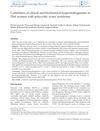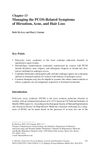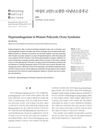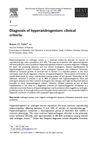Treatment of Hyperandrogenism in Polycystic Ovary Syndrome
October 2010
in “
Cambridge University Press eBooks
”
hyperandrogenism polycystic ovary syndrome PCOS acne hirsutism female-pattern hair loss combined oral contraceptives COCs cyproterone acetate venous thromboembolism glucocorticoids sebum production insulin-sensitizing drugs metformin serum androgen levels topical eflornithine hydrochloride spironolactone finasteride flutamide topical minoxidil Vaniqa Propecia Rogaine
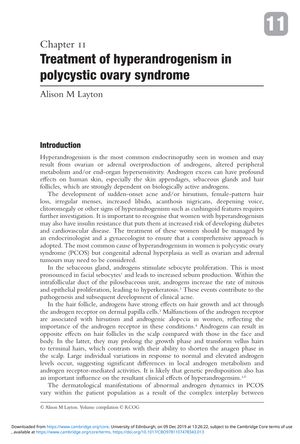
TLDR Hormonal therapies are effective for managing hair and skin symptoms in women with PCOS.
The 2010 document outlines various treatments for hyperandrogenism in women with polycystic ovary syndrome (PCOS), focusing on dermatological issues like acne, hirsutism, and female-pattern hair loss. It highlights the effectiveness of hormonal therapies, particularly combined oral contraceptives (COCs) and antiandrogens, in managing these symptoms. For acne, COCs with cyproterone acetate showed a 91% improvement at 12 months, but carry a risk of venous thromboembolism. Low-dose glucocorticoids can reduce sebum production, and insulin-sensitizing drugs like metformin are mentioned, though less effective for serum androgen levels. Hirsutism treatments include cosmetic methods, medical treatments like topical eflornithine hydrochloride, and systemic therapies such as spironolactone, finasteride, and flutamide. For female-pattern hair loss, oral contraceptives with antiandrogenic activity and topical 2% minoxidil are recommended. A 2005 study with 80 women showed that treatment with spironolactone or cyproterone acetate resulted in hair regrowth in 44%, no change in 44%, and continued hair loss in 12%. The document emphasizes the chronic nature of PCOS, the need for ongoing treatment, and the psychological impact of these conditions, calling for more randomized controlled trials to confirm treatment effectiveness.
